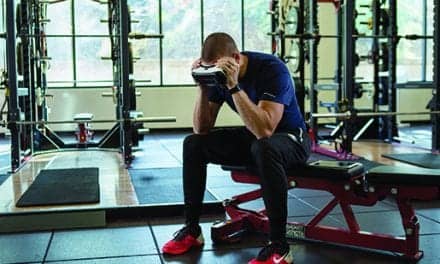 |
The long-term benefits of a practice-management system outweigh the short-term adjustments needed to switch over from a paper-based system. Depending on your needs, it may take a few months or up to a year to research and select the right system for you, but the end result will be an increase in efficiency.
WORKFLOW AUTOMATION
A major source of lost time within a practice is in workflow-related functions, such as appointment scheduling, patient registration, clinical encounters, and billing. Adopting a practice-management system for these duties can improve staff and patient experiences by streamlining processes so that patients receive more organized and immediate care.
For example, appointment scheduling for an entire practice can be at your fingertips from a single location when managing multiple practices. Software programs allow you to check the availability of appointments at multiple facilities from a computer situated at one central site, decreasing the number of phone calls and the length of patient wait times that occur when scheduling is performed via telephone and paper appointment books. The increased efficiency in the appointment-making process lets your administration team focus on more important office-management duties.
Patient-registration procedures can also benefit from the use of a software system. Upon an initial visit, the patient can be registered electronically via a software form (sometimes based online) without the need for the usual mountain of registration material, including file folders and registration sheets. Once the patient completes the registration form, the information is immediately on hand at all locations. The need to manually rummage through an overfilled filing cabinet is eliminated, reducing hassles.
MANUAL DOCUMENTATION
Manual documentation can be a time-consuming procedure, frequently demanding the notation of lengthy or repetitive comments. The human element of the tedious process makes the documentation inconsistent and susceptible to error, such as improper usage of highly particular semantics. Also, much time is wasted down the line in trying to keep pace with a growing pile of documentation waiting to be processed, not to mention the time squandered while trying to interpret the handwriting of different therapists. This can create problems for both therapists and their health care providers.
Moving from printed material to electronic entry and recording offers the same benefits as moving from snail mail to e-mail. Input and access are faster, the risk of human error is reduced, and the documentation has a high level of consistency, with no time spent decoding individuals’ unique scripts. In addition, accessing patient information from a different office using an electronic file will be much easier.
Consider a staff physical therapist’s need to coordinate with another department for a patient’s care. An electronic system enables the staff physical therapist to look up multidepartmental information from his or her current location, and check the patient’s daily activities and progress without worrying about the other physical therapists filling out forms incorrectly, removing much uncertainty and inefficiency from the routine.
CLAIMS PROCESSING
It is not uncommon for a physical therapy practice to be backed up in the processing of medical records for many weeks. The number of average patient visits per week across multiple locations can reach into the hundreds. If your office is not equipped with the right type of storage area, you could also be circulating hundreds of charts throughout the facility per day.
Information is entered quickly and accessed rapidly with an electronic medical records (EMR) system. This increase in speed removes a large obstruction in the flow of paperwork and makes the process more enjoyable, alleviating the pressure on medical records’ personnel, resulting in people who feel challenged and productive during their workday, and most likely decreasing the stress level of the staff.
Some claims can also be paid earlier, since processing is faster and the claims data is generally more accurate than handwritten records. Certain software programs are set up out of the box with currently existing CMS codes for treatments. This will prompt therapists to use the correct codes, ensuring a higher number of payments and a decrease in denial rates, since there is a reduction in ambiguity. Additionally, immediate validation of a patient’s insurance eligibility can facilitate more timely payments and less insurance paperwork.
Practice-management software also decreases the number of denied claims by improving billing functions. Most billing applications will identify problems with claims that should be rectified prior to their submission, which will improve the chances that the claims will be processed by the payor after the first submission. This will help reduce the time spent researching denials and resubmitting claims, and it may positively affect cash flow.
Advanced claims-management functions significantly reduce the number of denied claims by also streamlining a physical therapy practice’s payment process. For example, some software contains functionality that edits claims and determines the appropriate code for each payor based on cumulative data collected over time.
Although no health care practitioner wants to think of each patient as a “business,” the best ammunition against denied claims is knowledge. If one is to be in a debate about revenue, it is best for one to arm oneself with thorough and accurate information about each patient claim. Point-of-service data collection via integrated systems allows the acquisition of outcomes data, patient-satisfaction information, and indicators of compliance with mandatory clinical evaluation and management criteria.
REPORTING
The creation of reports is another time-consuming aspect of practice management. Having all of the elements necessary to run the various reports present in a single, easily accessible database massively cuts the amount of time involved. As many different reports are run daily, weekly, monthly, or yearly, a proper software system helps keep data points in place throughout the year, simplifying the reports-running process and making sure it’s at the highest level of efficiency.
Reporting requirements also need to be more robust. Ideally, your EMR software will both consolidate all departmental statistics to create reports for the entire practice and break out the data by location or department. Some software programs include numerous report templates, which cover patient results, referrals, appointment cancellations, resource usage, and much more. Custom reports based on an individual practice’s needs are a standard feature in most systems.
A software system also facilitates the creation of the most specific and comprehensive practice-management reports available for rehabilitation. Data-collection tools are built into the system, eliminating time-consuming data-collection tasks. The data can then be used to analyze outcomes along multiple dimensions, or to review referral patterns, financial statistics, patient satisfaction, and clinical outcomes.
Clearly, a practice-management system can solve many financial and logistical concerns for physical therapy practice owners. Investing in a suitable system can help practice owners realize a substantial return on their technology investment without breaking their budget. Further, as practice owners continue to implement more advanced systems—and explore the functionality of these systems—even more benefits are sure to emerge in the future.
Paul Stromers, PT, is a practice owner in Portland, Ore. He can be reached at .






